Synagogue🕍Mill Introduce
New York City is a metropolis built on layers of history, with stories around every corner. While the modern skyline often captures our attention, it's in the quiet nooks and historically rich streets of Lower Manhattan that some of the city's most profound narratives reside. One such narrative is intimately connected to a place known as "Synagogue Mill," a site that marks a foundational moment in American and Jewish history. More than just a location, Synagogue Mill represents the very genesis of organized Jewish life in North America, a pioneering spirit that resonates deeply with the broader story of New York's enduring commitment to religious freedom and diversity.
Located in the bustling financial district, the area historically known as "Synagogue Mill" is not a traditional park or garden in the contemporary sense. Instead, it refers to the site of the first purpose-built synagogue in continental North America. This historic site, specifically where the original Mill Street Synagogue stood, offers a powerful connection to the early days of New York City and the brave community that established a vibrant Jewish presence here. For locals, understanding this site is to understand a crucial piece of our city's heritage, recognizing the pioneering spirit that shaped New York into the multicultural mosaic it is today. It stands as a testament to the perseverance and resilience of early immigrant communities who laid the groundwork for the freedoms and opportunities we cherish.
The historical site of "Synagogue Mill," referring to the location of the first Mill Street Synagogue, is situated in Lower Manhattan. While the address provided, 95 Broad St, New York, NY 10004, USA, is a general address in the immediate vicinity, the exact historical spot of the first synagogue was on what was then called Mill Street, which is now known as South William Street. Specifically, the original Mill Street Synagogue (built in 1730) stood at what is now 26 South William Street, a site currently occupied by a parking garage. The second Mill Street Synagogue (built in 1818 on the same site) also stood there. The area is also co-named "Mill Street Synagogue/Seixas Way" in honor of the synagogue and its spiritual leader, Gershom Mendes Seixas. This places the historical significance very close to the provided Broad Street address.
Given its location in the heart of the Financial District, the historical site of Synagogue Mill is exceptionally accessible for New Yorkers and visitors alike, leveraging the city's comprehensive public transportation network.
Subway: The area is incredibly well-served by subway lines, making it easy to reach from all boroughs.
The 2 and 3 lines stop at Wall Street, just a very short walk away.
The J and Z lines are accessible at Broad Street, placing you almost at the doorstep.
The 4 and 5 lines serve Bowling Green, also within easy walking distance.
The R and W lines stop at Whitehall Street – South Ferry, providing another convenient option.
The 1 line terminates at South Ferry, again, a short stroll away.
Buses: Numerous MTA bus routes traverse Lower Manhattan, with stops strategically located near Broad Street and South William Street, offering convenient surface transportation options.
Ferry: For those coming from Staten Island or other waterfront communities, the Staten Island Ferry Terminal is very close, offering a scenic and efficient way to arrive, especially for those commuting or enjoying a leisure trip along the harbor.
Walking and Biking: As part of the pedestrian-friendly streets of Lower Manhattan, the site is highly accessible by foot for anyone in the immediate area. Cyclists can also reach the location via nearby bike lanes, though caution is advised due to the high volume of traffic in the financial district.
This excellent accessibility ensures that New Yorkers can easily visit this historically significant site and connect with the profound legacy it represents.
"Synagogue Mill," as a historical site marking the location of the first synagogue in North America, does not offer "services" in the conventional sense of a park with amenities like restrooms or playgrounds. Instead, its primary "services" are rooted in its historical and educational value, providing a unique connection to New York City's past and the origins of religious freedom in America.
Historical Education and Awareness: The site serves as a vital point of historical education. It provides an opportunity for locals and visitors to learn about the establishment of the first synagogue in North America in 1730 by Congregation Shearith Israel (the Spanish and Portuguese Synagogue) and its subsequent iterations on the same site. While there isn't a physical structure of the original synagogue, the historical context of the street co-naming and the narrative surrounding it offer profound lessons.
Commemoration and Recognition: The co-naming of a section of South William Street as "Mill Street Synagogue/Seixas Way" acts as a permanent public marker. This service of commemoration ensures that the historical significance of the site and the contributions of its early leaders, like Gershom Mendes Seixas (the "patriot rabbi"), are recognized and remembered by passersby.
Reflection and Contemplation: The site offers a space for quiet reflection on themes of religious freedom, immigration, and community building. In a busy financial district, knowing that such a foundational moment in American history took place here can inspire contemplation on the values that shaped the nation.
Gateway to Local History: For those interested in exploring the rich history of Lower Manhattan, this site serves as a key point of interest. It connects visitors to the broader historical narrative of the area, including its colonial past, revolutionary ties, and the development of its diverse communities.
Walkable Urban Experience: While not a traditional green space, the historical location is part of a walkable urban fabric. It encourages pedestrian exploration of Lower Manhattan, allowing visitors to discover the layers of history embedded in the streetscape.
The historical site of "Synagogue Mill" is rich with features and highlights that speak to its unique place in New York City's story and the broader American narrative.
Site of North America's First Synagogue: The most prominent feature is its historical significance as the location of the Mill Street Synagogue, consecrated on April 8, 1730. This was the first purpose-built synagogue in continental North America, a groundbreaking moment for religious freedom and the Jewish community.
Congregation Shearith Israel's Original Home: This site was the initial home of Congregation Shearith Israel, also known as the Spanish and Portuguese Synagogue, which remains an active and vibrant congregation today. Its lineage traces back to this pivotal location, highlighting continuity and legacy.
Co-Named Street: A section of South William Street, where the synagogue stood, has been officially co-named "Mill Street Synagogue/Seixas Way." This street sign is a tangible marker of the site's importance, serving as a permanent tribute to the synagogue and its revered spiritual leader, Gershom Mendes Seixas.
Deep Historical Roots in Colonial NYC: The synagogue's establishment in 1730 firmly roots the site in colonial New York. It existed before the American Revolution, and its congregants, under the leadership of Rabbi Seixas, were known for their support of American independence and religious liberty.
Symbol of Religious Tolerance: The existence of a dedicated synagogue building in 18th-century New York speaks volumes about the early development of religious tolerance in the colonies, a foundational principle of the future United States. This site embodies that critical historical development.
Urban Archaeology and Memory: Although the original buildings are no longer standing, the site represents a significant piece of urban archaeology and collective memory. It prompts visitors to imagine the thriving Jewish community that once worshipped and lived in this area centuries ago.
Close to Other Historic Landmarks: The area around 95 Broad Street and South William Street is teeming with other historical sites, including Fraunces Tavern, Battery Park, and Bowling Green Park. This allows visitors to easily integrate a visit to Synagogue Mill into a broader historical exploration of Lower Manhattan.
As a historical site managed by the city and commemorated by local historical associations, "Synagogue Mill" (the site of the former Mill Street Synagogue) does not have traditional "promotions" or "special offers" like a commercial business. There are no sales, discounts, or loyalty programs associated with visiting this location.
However, the "offers" related to Synagogue Mill are found in the rich educational and cultural programming often organized by historical societies, community groups, and the synagogue it descended from (Congregation Shearith Israel). These events aim to promote awareness and understanding of the site's significance. While not constant, potential "special offers" for locals could include:
Commemorative Ceremonies: Anniversaries related to the synagogue's consecration or historical milestones are occasionally marked with public ceremonies, often involving the Lower Manhattan Historical Association or Congregation Shearith Israel. These are free and open to the public, offering unique insights and a sense of community.
Guided Walking Tours: Local historical organizations may offer free or low-cost guided walking tours of Lower Manhattan that include the Mill Street Synagogue site as a significant stop. These tours provide expert commentary and historical context that enriches the visit.
Lectures and Webinars: Throughout the year, historical societies and Jewish cultural centers might host lectures, panels, or webinars on early American Jewish history, often referencing the Mill Street Synagogue. These events are often free or have a nominal fee and provide in-depth historical knowledge.
Digital Resources and Exhibits: While not a physical "offer" at the site itself, institutions like Congregation Shearith Israel and various historical archives provide extensive digital resources, articles, and sometimes virtual exhibits about the Mill Street Synagogue. These are free to access and offer a deeper dive into the history.
To stay informed about any such "special offers" or public events related to the Mill Street Synagogue site, locals are advised to check the websites and social media channels of:
The Lower Manhattan Historical Association
Congregation Shearith Israel
The New York City Department of Parks & Recreation (for any relevant general park events)
These resources are the best way to discover opportunities to engage with the history of Synagogue Mill.
As "Synagogue Mill" refers to a historical site and not a currently operating business or park with dedicated staff, direct contact information in the traditional sense is not applicable to the site itself. However, for historical inquiries or information related to the significance of the former Mill Street Synagogue, or to inquire about related events, the best points of contact would be the organizations deeply connected to its legacy.
Address:Historical Site of Synagogue MillNear 95 Broad St, New York, NY 10004, USA(Specifically, the original site was on what is now 26 South William Street, with the area co-named "Mill Street Synagogue/Seixas Way.")
Phone:Since there isn't a direct phone number for the historical site itself, for historical inquiries or information about related events, it would be best to contact:
Congregation Shearith Israel (The Spanish and Portuguese Synagogue): As the direct descendant congregation of the Mill Street Synagogue, they are the primary custodians of its historical narrative and traditions. Their contact information can be found on their official website.
Lower Manhattan Historical Association: This organization actively works to commemorate and educate the public about the rich history of Lower Manhattan, including the Mill Street Synagogue. Their contact details would be available via their website.
There is no public phone number associated with the specific address 95 Broad St for inquiries about "Synagogue Mill" as a "park." The address provided points to a commercial building, and the historical site is an unpreserved historical footprint in the urban landscape.
The historical site of "Synagogue Mill" is exceptionally suitable for New York City locals, offering a profound and often overlooked connection to the city's foundational history and the broader American narrative of religious freedom and multiculturalism. While not a conventional park with recreational amenities, its immense historical value makes it a compelling destination for anyone seeking to understand the deep roots of New York's diverse identity.
For New Yorkers, visiting this site is an act of civic engagement and historical discovery. It provides a tangible link to the earliest Jewish community in North America, established by courageous individuals seeking religious freedom and opportunity. Understanding that the first purpose-built synagogue on the continent stood here on what is now South William Street offers a powerful perspective on the city's long-standing commitment to welcoming different faiths and cultures. It's a reminder that New York has been a beacon of hope and a melting pot from its very earliest days, a narrative that continues to define us.
The area around Synagogue Mill is steeped in history. Locals can incorporate a visit to this site into a broader exploration of Lower Manhattan, perhaps combining it with a walk through Bowling Green, a visit to Fraunces Tavern, or a contemplation at the nearby 9/11 Memorial. This integration allows residents to deepen their appreciation for the layered history beneath their feet, transforming familiar streets into pathways of discovery.
Furthermore, for members of New York's vibrant Jewish community, this site holds a special significance. It is the spiritual and historical birthplace of their heritage in America, a place to connect with the perseverance of their ancestors and the continuity of their faith. Even for those without direct Jewish lineage, it's a testament to the diverse communities that have collectively built New York.
In a city that constantly reinvents itself, places like Synagogue Mill serve as vital anchors to our past. They remind us of the struggles, triumphs, and foundational principles that shaped New York into the extraordinary place it is. For locals, this historical site isn't just about what once was; it's about understanding who we are, where we came from, and the enduring values that continue to make New York City a unique and welcoming home for people from all walks of life. A visit here is a quiet yet powerful affirmation of our shared heritage and the rich tapestry of our city.
Synagogue🕍Mill Photos
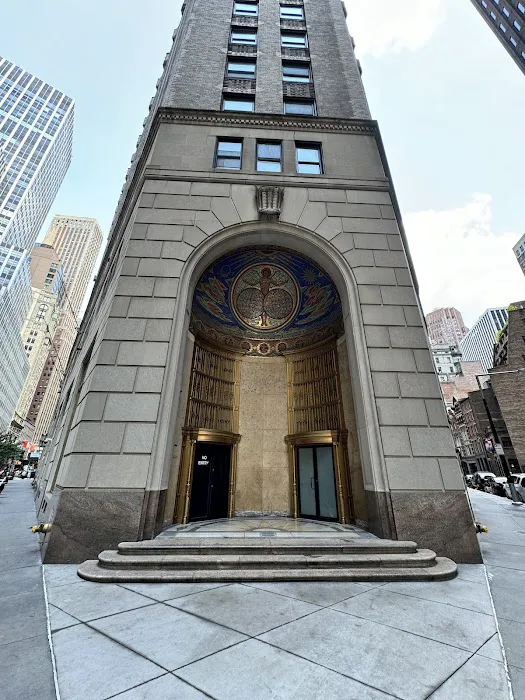
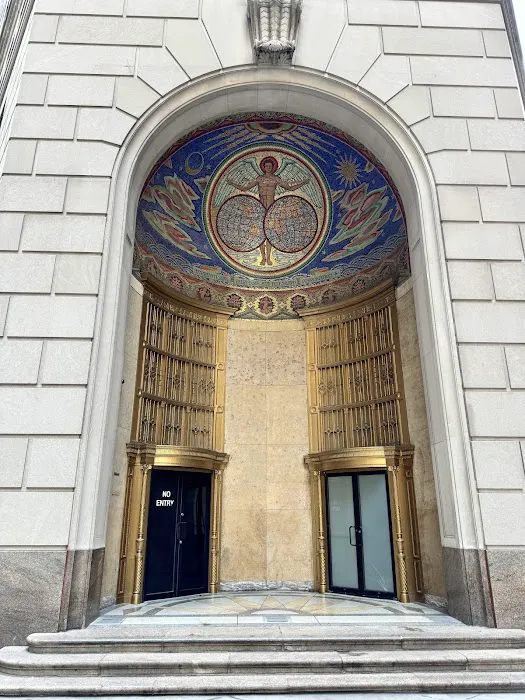
Synagogue🕍Mill Location
Synagogue🕍Mill
95 Broad St, New York, NY 10004, USA
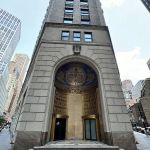 Synagogue🕍Mill
Synagogue🕍Mill95 Broad St
 Coenties Slip
Coenties Slip&
 Coenties Slip
Coenties SlipCoenties Slip
 The FIDI Hotel
The FIDI Hotel11 Stone St
 DoubleTree by Hilton New York Downtown
DoubleTree by Hilton New York Downtown8 Stone St
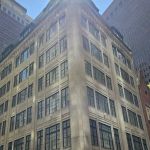 The Wall Street Inn
The Wall Street Inn9 S William St
 Hampton Inn Manhattan/Downtown-Financial District
Hampton Inn Manhattan/Downtown-Financial District32 Pearl St
 Hilton Garden Inn NYC Financial Center/Manhattan Downtown
Hilton Garden Inn NYC Financial Center/Manhattan Downtown6 Water St
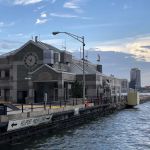 New York Vietnam Veterans Memorial Plaza Square
New York Vietnam Veterans Memorial Plaza Square55 Water St
 The Queen Elizabeth II Garden
The Queen Elizabeth II Garden11 Hanover Square #12
 Old Slip Park
Old Slip ParkWater Street & Old Slip
 Elevated Acre
Elevated Acre55 Water St
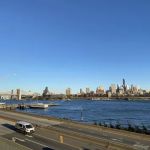 Roselinda Garden (Public Space)
Roselinda Garden (Public Space)27 Old Slip
Synagogue🕍Mill Reviews
More Scenic Spot
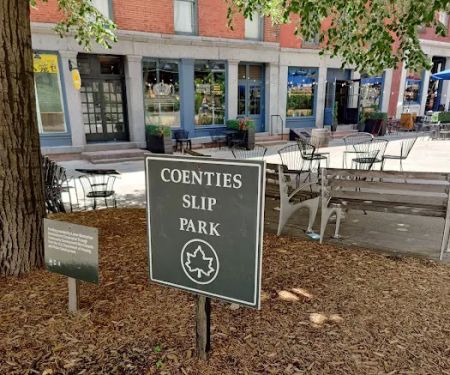 Coenties Slip4.0 (16 reviews)
Coenties Slip4.0 (16 reviews)&, Water St &, Coenties Slip, New York, NY 10004, USA
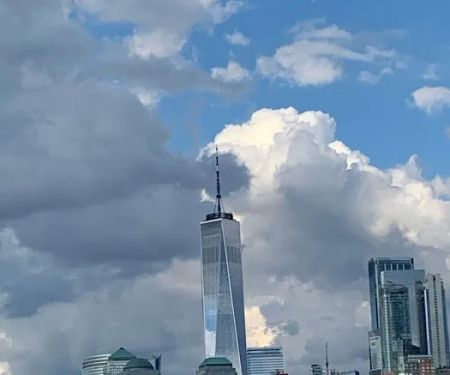 Coenties Slip0.0 (0 reviews)
Coenties Slip0.0 (0 reviews)Coenties Slip, New York, NY 10004, USA
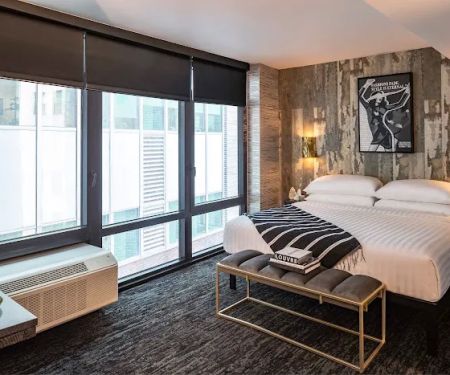 The FIDI Hotel4.0 (225 reviews)
The FIDI Hotel4.0 (225 reviews)11 Stone St, New York, NY 10004, USA
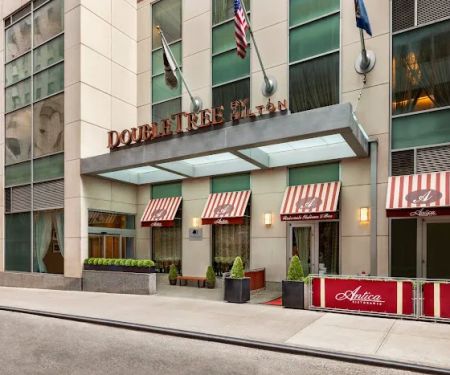 DoubleTree by Hilton New York Downtown3.0 (3511 reviews)
DoubleTree by Hilton New York Downtown3.0 (3511 reviews)8 Stone St, New York, NY 10004, USA
 The Wall Street Inn4.0 (539 reviews)
The Wall Street Inn4.0 (539 reviews)9 S William St, New York, NY 10004, USA
 Hampton Inn Manhattan/Downtown-Financial District3.0 (782 reviews)
Hampton Inn Manhattan/Downtown-Financial District3.0 (782 reviews)32 Pearl St, New York, NY 10004, USA
 Hilton Garden Inn NYC Financial Center/Manhattan Downtown4.0 (1772 reviews)
Hilton Garden Inn NYC Financial Center/Manhattan Downtown4.0 (1772 reviews)6 Water St, New York, NY 10004, USA
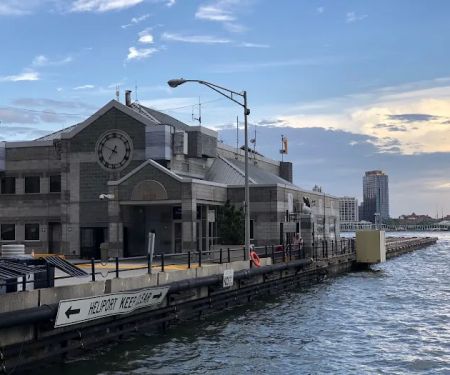 New York Vietnam Veterans Memorial Plaza Square4.0 (627 reviews)
New York Vietnam Veterans Memorial Plaza Square4.0 (627 reviews)55 Water St, New York, NY 10041, USA
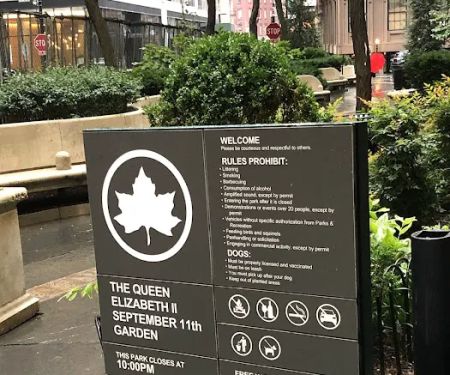 The Queen Elizabeth II Garden4.0 (76 reviews)
The Queen Elizabeth II Garden4.0 (76 reviews)11 Hanover Square #12, New York, NY 10005, USA
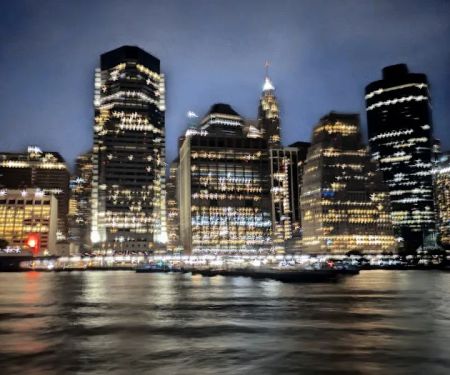 Old Slip Park4.0 (14 reviews)
Old Slip Park4.0 (14 reviews)Water Street & Old Slip, Water St, New York, NY 10005, USA
 Elevated Acre4.0 (638 reviews)
Elevated Acre4.0 (638 reviews)55 Water St, New York, NY 10041, USA
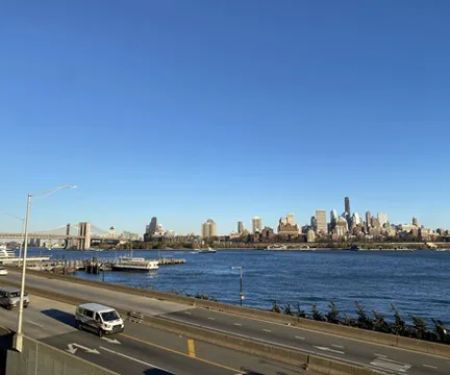 Roselinda Garden (Public Space)4.0 (12 reviews)
Roselinda Garden (Public Space)4.0 (12 reviews)27 Old Slip, New York, NY 10004, USA
Categories
Popular Camping Sites
 DoubleTree by Hilton Hotel Nanuet4.0 (1560 reviews)
DoubleTree by Hilton Hotel Nanuet4.0 (1560 reviews) Traction Line Trail Access5.0 (1 reviews)
Traction Line Trail Access5.0 (1 reviews) Homewood Suites by Hilton Parsippany-Troy Hills4.0 (907 reviews)
Homewood Suites by Hilton Parsippany-Troy Hills4.0 (907 reviews) Umbrella Hotel Brooklyn3.0 (293 reviews)
Umbrella Hotel Brooklyn3.0 (293 reviews) Manchester Park4.0 (14 reviews)
Manchester Park4.0 (14 reviews) Garden of Love5.0 (2 reviews)
Garden of Love5.0 (2 reviews)Trending Camping Blog Posts
 Top Group Travel Destinations in Europe: Best Places for Group Vacations
Top Group Travel Destinations in Europe: Best Places for Group Vacations How to Get Involved in Travel Clans for Social Travel: Explore Group Travel Opportunities
How to Get Involved in Travel Clans for Social Travel: Explore Group Travel Opportunities Best Travel Clans for Sustainable Travel
Best Travel Clans for Sustainable Travel Best Group Vacation Destinations for Friends: Ultimate Travel Ideas
Best Group Vacation Destinations for Friends: Ultimate Travel Ideas Travel Clans for Solo Travelers Looking for Company: Join Unique Travel Communities
Travel Clans for Solo Travelers Looking for Company: Join Unique Travel Communities Best Travel Clans for Women Traveling Together
Best Travel Clans for Women Traveling Together 
